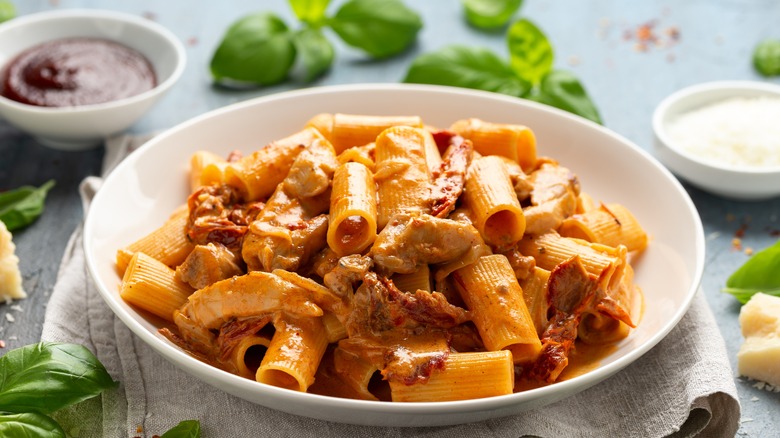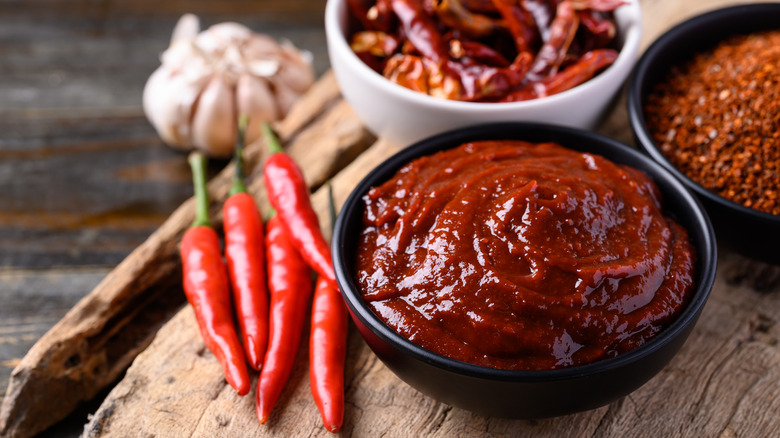Gochujang Makes For A Perfect, Spicy Pasta Sauce Base
If you've ever dug into a bowl of vegetarian bibimbap and noticed a sticky, vibrantly red sauce drizzling over the white rice and steaming vegetables, then you've probably tried gochujang. Sweet and spicy, the beloved Korean paste combines fermented chiles and soybean powder with barley malt and glutinous rice. While gochujang shines in a multitude of Korean recipes — like stewed, spicy rice cakes known as tteokbokki — its versatility stretches far and wide.
The chili paste has also made waves by starring in pasta recipes, and we're not complaining. Home cooks and recipe developers have paired gochujang with ingredients ranging from heavy cream to tomato paste before tossing the slick, glossy sauce with a short Italian pasta, like rigatoni, paccheri or cavatappi. With a generous dusting of grated Parmesan and a sprinkling of fresh parsley, the result is a deeply flavored dish that combines the joys of both Korean and Italian flavors.
Dilute your gochujang for a well-balanced flavor
Typically fermented for months (or longer), gochujang packs a powerful punch of condensed flavor. To incorporate the paste into your next pasta sauce, keep in mind that a small spoonful goes a long way. Try caramelizing a scoop of gochujang in a pan generously filled with olive oil, further deepening and sweetening the flavor of the chili paste.
From there, the sky's the limit. Consider toasting aromatics like garlic or shallots to add into your pasta sauce, or melt a slab of butter for next level richness. To provide another layer of sweet acidity, try adding a hint of tomato paste. If you're craving an extra-spicy kick, sprinkle in some gochugaru — finely ground Korean red pepper flakes. Season with salt to taste as you further develop your sauce, and be sure to dilute the gochujang with some reserved pasta water. Not only will this method mellow out the strong gochujang flavor, it will also add more gluten to the sauce, allowing it to cling pleasantly to your pasta once you serve it.

